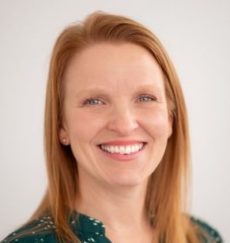
Katie Smith Sloan, leader of the nation’s main advocacy group for nonprofit long-term care providers, this week told her members that the pandemic has given them a “significant opportunity to redefine aging services.”
And for certain, change has dominated the landscape at the LeadingAge Meeting & Expo in Atlanta, where thousands of providers are gathered for the first time in two years for what their president and CEO terms “renewal.”
And yet, renewal doesn’t seem as though it’s going to cut it anymore.
Maybe it’s rebirth they’re after?
Speaker after speaker at this week’s sessions have talked about reimagining aging services, whether that’s to retain workers, to attract residents or to create a system better able to weather the next COVID-19.
There’s talk of partnerships, i.e. collaborating with competitors; getting boards more involved so that executives can get their innovations funded; bridging the gaps that have long existed between skilled nursing and other sectors that might have once been viewed as threatening their business; and putting nursing homes in highly visible places where they can be community supported through intricate, mission-based networks.
The problem is that the public still can’t easily differentiate between different service lines or between a high-quality nursing home and one that’s less than ideal. Or, unfortunately, between the heroes we know kept residents safe and the government policies blamed for “killing residents” during COVID.
That’s why Sloan wants to let that old version of aging services die and shine the light on what’s blooming in its place.
“To know us is to love us,” she said in launching the convention.
And, yet, knowing what the industry has been through during coronavirus surge after surge, political volley after political volley, both Sloan and outgoing Board Chairwoman Carol Silver Elliott acknowledged frankly that simply recasting providers in a better light won’t deliver this hard-hit industry any awards on its own.
Instead, the spotlight needs to point the way forward, giving operators a path to success and making their facilities places modern people want as their homes.
“This is our moment in so many ways,” said Silver Elliott. “This is our moment to rethink the relationship we have with the people we care for. This is our moment to say, ‘Are we really providers providing something, or are we partners working with older adults to help them define what they need, help them achieve meaningful life and a sense of purpose?’”
As Silver Elliott sees it, COVID and what has been learned over the last 20 months is the lever that can now usher in dramatic change. All the things that weren’t working but the industry held onto out of habit? Toss what you can out the window and go with what feels right by your standards (within the rules of the system, of course).
We’ve all aged a lot since March of 2020. In that vein, Silver Elliott asked providers to allow their decisions to be influenced by what they’d want if they were aging seniors right now. Because when there are options, she knows no one willingly takes less than they desire.
“What are we going to settle for?” she asked. “Is this the life we want to have as we become elders? It’s not. The people that are reaching our systems at this point in time are not going to settle for it.”
Kimberly Marselas is senior editor of McKnight’s Long-Term Care News.
Opinions expressed in McKnight’s Long-Term Care columns are not necessarily those of McKnight’s.



